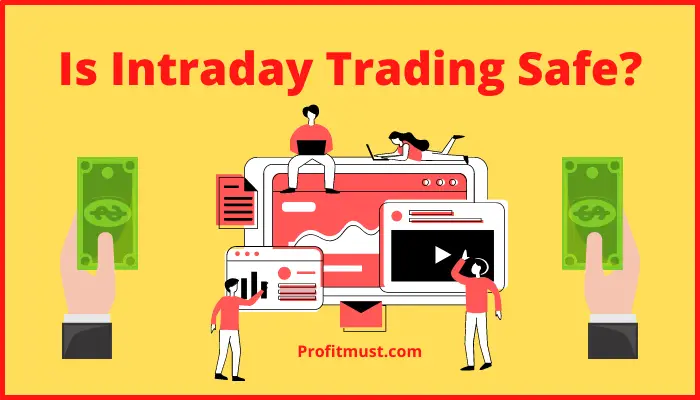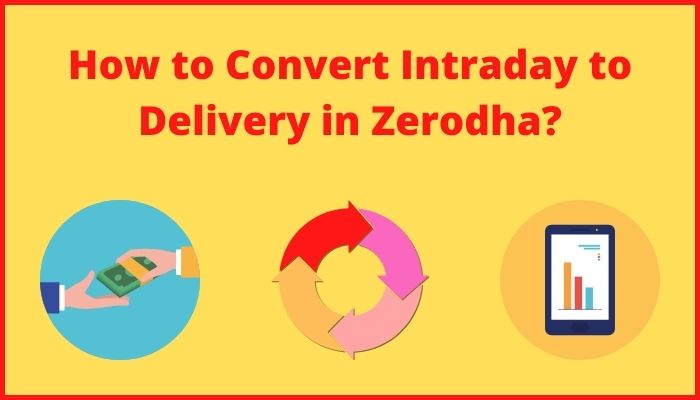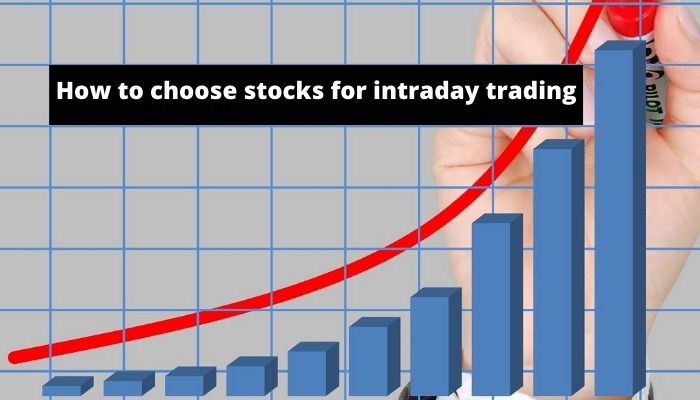Stock market trading involves numerous forms. Some investors have short-term views like frequently purchasing and selling and others are long-term views. There are 2 techniques of trading in the stock markets, according to which you can trade : intraday and delivery.
Let’s discuss the difference between Intraday and Delivery to understand them clearly.
Table of Contents
Difference Between Intraday and Delivery
The difference between intraday and delivery trading is that intraday trading involves purchasing and selling stocks inside a single trading day, whereas delivery trading occurs when you do not square off your position.
Intraday and delivery-based trading approaches are different.It may be difficult to fully comprehend intraday trading without first understanding how it differs from delivery-based trading.
Delivery trading requires full funds for its transactions, whereas intraday trading allows for lower capital accounts and margin obligations.
Let’s evaluate and contrast the two trading methods.
Intraday Trading
Intraday trading takes place when you purchase and sell equities on the same trading day. Shares are bought in this manner with the intent of making a profit rather than for investment purposes.
This is accomplished by using the volatility of stock benchmarks, which indicates that the volatile prices of shares are used in an attempt to gain from share trading.
An online trading account must be opened up with special commands that are particular to intraday trading in sequence to operate in intraday trading. Before the conclusion of the trading day, these orders are settled.

Advantage
- The trader only needs a low amount of capital because payments are made in tiny margins.
- To maximise returns, the investor might use leveraged money.
- It reduces the stock market’s overnight threats.
Disadvantage
- Long-term capital investments option is not available.
- Leverage might result in even more losses.
- Since transactions finish at the end of the day, it involves the trader’s constant monitoring.
Delivery Trading
Among the most frequent trading strategies in the share market is delivery trading. Unlike intraday trading, delivery trading includes a clear purpose to invest rather than just trading possibilities.
This is because investors want to keep their stock investments for a longer length of time. There are no time limitations in this procedure when it comes to selling stocks.
It is deemed a delivery deal as soon as the shares are delivered to the linked demat accounts. Without a demat account, you won’t be able to execute delivery transactions since your shares will be kept there.

Advantages of Delivery Trading
- There is no timeframe on when you can sell your investments.
- It makes bonus earnings simple, such as dividends, bonus issues, and rights issues, with the share owner receiving all of the firm’s bonuses.
- It aids in considerably boosting the profits of the investor by providing larger returns to the shareholder via dividends and incentives paid by the firm.
- Short selling carries no risk. The strategy of borrowing stocks to sell in the market and then purchasing them back before the conclusion of the trading day is known as short selling.
Disadvantage of Delivery Trading
- No Up Front Margin: No trading can occur if the investor is unable to pay the full amount of the transaction. As a result, a lack of cash may cause an investor to miss out on a fantastic chance.
- Overnight risk: In delivery trading, overnight risk is the biggest threat as the stock market mostly runs on news basis if any bad news comes in the night then your profits can turn into losses.
Intraday vs Delivery (Major Difference Between Intraday and Delivery)
| Basis | Intraday | Delivery |
| Holding Period | You need to square off the position within the same trading day. | You can carry forward your position and hold it as long as you want. |
| Margins | You will get 2x to 10x leverage in Intraday. | You will not get any leverage in Delivery. |
| Risk | Risk of losing money is higher than Delivery. | Risk of losing money is less than Intraday. |
| Trading Option | You will get more trading options as you only need to pay margins. | Less trading options as you need to pay full money. |
| Returns | Less chance of profit as you have only one day. | fair chance of profit as you can hold them until they come in profit. |
Major difference between intraday and delivery trading
After Understanding Difference Between Intraday and Delivery, These are the major things which you need to consider while comparing Intraday with Delivery:
Time frame
It’s clear to determine that intraday trading is often finished in a single day. This usually implies that any stocks acquired throughout the day should be sold before the markets close at the end of the day. If these shares aren’t sold, they’ll be squared off at the end of the day.On the other hand, with delivery-based trading, stocks purchased can be held for a longer period of time, resulting in larger profit returns.
Funds
While intraday trading allows for modest capital accounts and margin payments, delivery trading needs full funds to be transacted.
Method
Intraday trading is a fantastic concept for intraday traders who can assess and predict the value of stocks at short and minor intervals. However, there are a number of technical techniques that can help forecast short-term price changes.
Delivery-based trading, on the other hand, may be a better choice if one believes long-term investing is a perfect choice for them.
They are able to pick equity depending on the firm’s essential worth and approachable evaluations (including the firm’s fundamental indicators – including price-to-earnings ratio, book value, and the like).
Important Things in Intraday Trading
After Difference Between Intraday and Delivery, It is up to you to determine what you want to do with a share once you have purchased it. If you like, you may retain it for the next century or sell it on the same day. Both have their advantages, but if you’re planning to close your trade on the same day, you should be aware of certain intraday trading advice.
Important Points
- Intraday trading, as the term implies, is the act of purchasing and selling equities on the same day. Essentially, you purchase shares on a daily basis, seek a fair price to sell it for, and then gain.
- Trading is an instance of strategy and execution. Before you accomplish anything, you must have a clear understanding. Develop your portfolio based on your needs and financial stability.
- For intraday trading, regular analysis and study are required. The fluctuation of the market’s trend must be represented in a trader’s approach. Using the same technique everywhere isn’t a good idea. So make sure what you’re working on is up to current with market trends before putting it into action.
- For intraday trading, it’s best to seek liquid stocks. Because a trader’s position must be squared off at the end of the day, large cap stocks are preferable.
Note:
Do not try to go against the market’s movement. Even those who have been trading for more than a decade are unable to explain or forecast market conditions.
Do’s in Intraday
Intraday trading, as the name implies, is the act of purchasing and selling equities on the same day. In essence, you buy shares on a daily basis, wait for a fair price to sell them, and then profit.
While it appears to be the quickest path to large money, the saying “everything that glitters is not gold” still applies. There are several hidden complications in this relatively easy undertaking that might cause you to lose your way.
Let’s take a look at a few methods that might help you trade more effectively.
Portfolio
Trading is an example of developing and executing. Before you accomplish anything, you must have a clear idea. Manage your portfolio based on your needs and financial stability.
Indications
Trading charts show the behaviour of shares across time and include different indicators that can assist anticipate how a stock will perform in the future.
Before you acquire a stock, include these in your calculations since they can assist you understand how it will perform during the day.
Greed and Anxiety
Intraday trading is one of the most volatile types of trading. Once you’ve gotten into this industry, you’ll need to learn to manage your greed and anxiety. It is not always required to make a profit, and the same may be said for the other way through. Although this is a fast-paced market, it still needs patience.
Monitoring
Intraday trading necessitates daily analysis and study. The fluctuation of the market’s momentum must be represented in a trader’s approach. Using the same technique everywhere isn’t a good idea. So make sure what you’re working on is up to current with market trends before putting it into action.
Don’t in Intraday Trading
These are some things which you need not to do in Intraday Trading:
Unconfirmed News
The media may be a tumultuous place. The stock market follows suit. Pay little attention to rumours circulating about you unless you are confident about them. They may cause you to depart from your plan in unanticipated ways. The easiest method to cope with rumours is to stick to your plan until you get confirmation of the information.
Present in everything
“Today is what you have.” In intraday trading, there is no future tense. Any stock should not be used to prepare for the future. What you buy now is what you will sell tomorrow. Plan your day around the single day you have available.
Earning
In trading, don’t always expect to make money. Trade has never been a level playing field. If one succeeds, the other must fail.
Over Trading
The key to a happy life is satisfaction. Keep your earnings in mind, but don’t go out of your way to make a lot of money.
If you’ve made a lot of money on a given day and there’s still time until the market closes, it doesn’t imply it’s the best day to invest it all.
That is never how the market works. Respect what you’ve achieved and develop the ability to be happy.
Things to keep in mind while doing Intraday trading
For intraday trading, it’s best to seek liquid stocks. Because a trader’s position must be squared off at the end of the day, large cap stocks are preferable. Otherwise, owing to a lack of trading activity, you may have to hold the shares. Here are some additional intraday trading tips and methods.

Stop Loss
Stop Loss is a tool that allows you to sell a share automatically if its price falls below a specified level. It is advantageous to traders since it reduces the possibility of a loss.
Profit
It’s just as important to earn a profit as it is to prevent a loss. Stop allowing your greed to dictate your choices. At the same time, don’t allow fear to prevent you from entering deals. On any given day, look for a specific quantity to trade. Do not invest all of your funds at once.
Analysis
Before purchasing your stocks, check for dividends, stock splits, bonus dates, mergers, and other complications. It’s a good idea to put 5 to 7 shares on your wish list and do some research on them.
Exit
Do not try to go against the market’s tide. Even those who have been trading for more than a decade are unable to explain or forecast market conditions. You should know when to exit if the market fails to meet your goals.
Conclusion
intraday and delivery, anyone of them people really want the answer, but the real answer is depending on your personality. If you have the capability of learning you can learn any of them & become successful.
This is all from our side regarding Difference Between Intraday and Delivery. Although, if you have any doubts about difference between delivery and intraday you can just comment below.
Other Interesting blogs related to Difference Between Intraday and Delivery:
Difference between Nifty and Sensex
How to choose stocks for intraday trading
Difference Between FDI and FII
FAQ About intraday vs delivery
इंट्राडे एंड डिलीवरी?
इंट्राडे ट्रेडिंग तब होती है जब आप एक ही ट्रेडिंग दिन में इक्विटी खरीदते और बेचते हैं। शेयर इस तरह से निवेश उद्देश्यों के बजाय लाभ कमाने के इरादे से खरीदे जाते हैं। शेयर बाजार में सबसे लगातार ट्रेडिंग रणनीतियों में डिलीवरी ट्रेडिंग है। इंट्राडे ट्रेडिंग के विपरीत, डिलीवरी ट्रेडिंग में केवल ट्रेडिंग संभावनाओं के बजाय निवेश करने का एक स्पष्ट उद्देश्य शामिल होता है।
What is delivery trading?
Among the most frequent trading strategies in the share market is delivery trading. Unlike intraday trading, delivery trading includes a clear purpose to invest rather than just trading possibilities. This is because investors want to keep their stock investments for a longer length of time. There are no time limitations in this procedure when it comes to selling stocks.
Difference between intraday and delivery in Hindi
इंट्राडे और डिलीवरी ट्रेडिंग के बीच का अंतर यह है कि इंट्राडे ट्रेडिंग में एक ट्रेडिंग दिन के भीतर स्टॉक खरीदना और बेचना शामिल है, जबकि डिलीवरी ट्रेडिंग तब होती है जब आप अपनी स्थिति को स्क्वायर ऑफ नहीं करते हैं।
Which is more profitable intraday or delivery?
It is totally depend on you experience & skills. If you have good experience & great technical skills then Intraday is best or for everyone else Delivery is profitable.
Which is better intraday or delivery
If you have good experience & great technical skills then Intraday is better or for everyone else Delivery is better.

